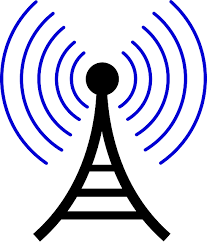FAQ: What is the Difference Between GSM and CDMA?
September 5, 2016/

Main Differences
Which is better is hard to say as they are really just two different ways of accomplishing the same goal. However, there are quite a few factors that differentiate GSM and CDMA. 1. SIMs The SIM cards store network and personal information on your phone, and are specific to your phone number. Before the introduction of LTE data speeds, GSM phones typically came equipped with a SIM card slot, while CDMA phones did not. However, now all phones that utilize LTE use a SIM card. Even with the addition of a SIM card, though, the CDMA companies in America typically use a “white list” to verify its customers. GSM phones are able to be activated simply by purchasing a SIM card or by transferring your SIM card to the phone. With CDMA networks, you need your carrier’s permission to use your phone elsewhere, and it must be ‘ported’ over to the new network. 2. Unlocking If a phone is locked, that means it is restricted by software so that it can only be used with a specific carrier or network. In the past, CDMA phones could not be unlocked. But to keep up with the evolution of technology, both Sprint and Verizon now offer unlocked phones. Sprint, in particular, requires customers to fill out quite a bit of paperwork beforehand, though. GSM phones, however, are very easily unlocked and transferred between carriers, so long as the phone isn’t flagged as stolen and you owe no money on it. Unlocked GSM phones can be purchased from some third party sites like Amazon. 3. Phones In most cases, you will get a GSM or a CDMA phone depending on the carrier you use. Keep in mind that if you do get a CDMA phone, you’ll probably need to purchase it through your carrier. Most prepaid devices are available in either option, but will not work for both. Exceptions to this would include the iPhone, some Motorola devices, and a few other high-quality phones. With iPhone, you are only able to switch frequencies through your settings if you are traveling internationally. Otherwise, even with GSM/CDMA phones, you need your carrier’s permission to switch.LTE Changed the Game
Now that we are all on the same page about the differences between GSM and CDMA, let’s touch on LTE. Long Term Evolution (LTE) is actually its own standard, operating outside of GSM and CDMA networks. It includes much faster data speeds and since LTE was introduced, it has changed things a little. Now, CDMA devices that want to access LTE data speeds must have a SIM slot because LTE operates with a SIM card. Networks operating using CDMA are no longer trying to speed up the CDMA standard; they are instead adapting to LTE to become more global. South Korea and the United States currently lead the LTE market, while the rest of the world lacks widespread coverage. LTE is offered in less than half the areas with network coverage across the globe. So, for now, the U.S. typically uses LTE for faster data in addition to operating off the GSM or CDMA network. The ultimate goal, in time, is to have LTE replace our traditional networks all together.]]>
Posted in FAQ
